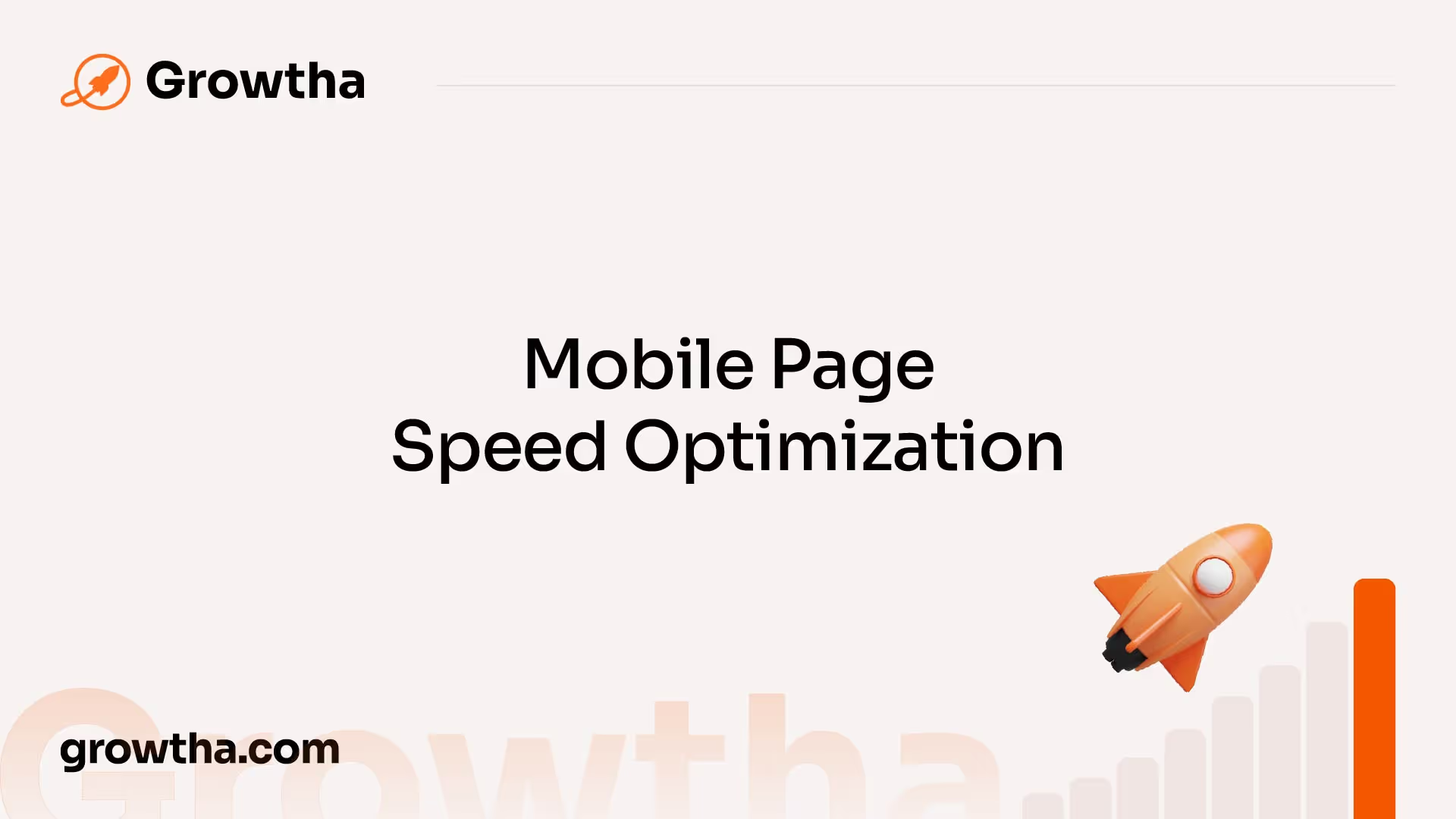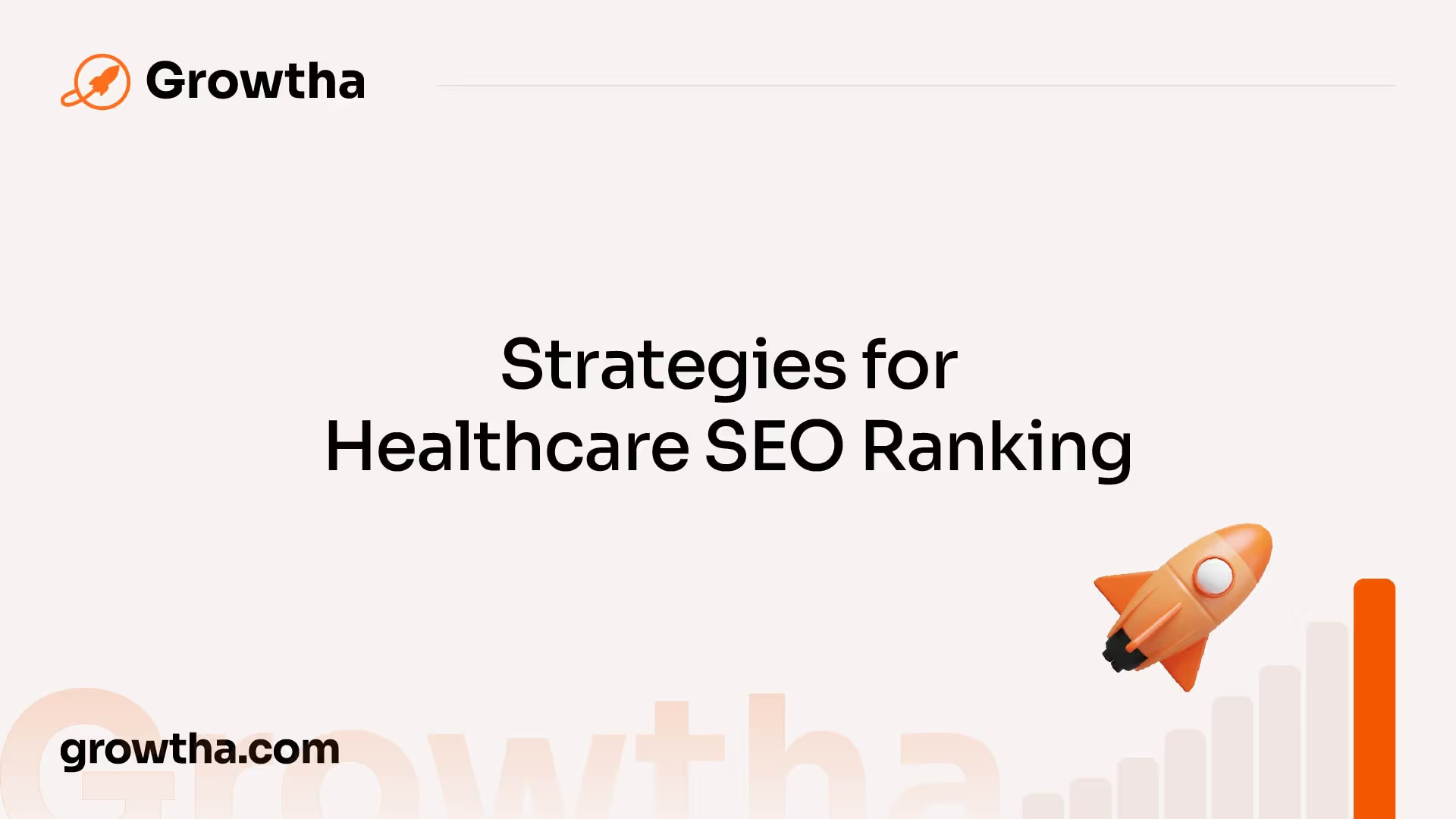Healthcare Website Speed Optimization
The speed at which a website loads can significantly impact various aspects, from user experience to search engine optimization (SEO).


Healthcare Website Speed Optimization
Understanding Website Speed Optimization

In the digital age, website speed optimization plays a crucial role in the success of healthcare websites. The speed at which a website loads can significantly impact various aspects, from user experience to search engine optimization (SEO).
Impact of Website Load Time
The load time of a website can have far-reaching consequences. According to Search Business Group, every second delay in website load time may result in a loss of 1% of revenue. Slow load times can lead to frustrated users who may abandon the site, resulting in missed opportunities and potential revenue loss.
Furthermore, slow site speed can negatively impact search engine rankings. Search engines, like Google, consider website speed as a ranking factor. A slow-loading site may receive lower rankings, resulting in reduced visibility and organic traffic. It's important to note that faster websites are more attractive to both users and search engine crawlers [1].
Importance of Site Speed for SEO
Page speed is a critical factor in SEO. Google has acknowledged that site speed matters for search rankings. In fact, Google rolled out an update in July 2018 that made mobile page speed a ranking factor. A healthcare website that loads quickly and provides a seamless user experience is more likely to rank higher in search engine results pages.
Search engines evaluate various metrics, such as average duration visitors stay on a healthcare website, bounce rate, pages viewed, broken links, outbound and inbound links, among others, to determine SEO ranking [3]. A user-friendly website that keeps visitors engaged and encourages them to explore different sections or pages can significantly improve SEO ranking.
To optimize a healthcare website for SEO, it's essential to include well-researched keywords to attract visitors. However, optimizing the website for search engines while ensuring user-friendliness is crucial for improving SEO ranking [3]. By focusing on website speed optimization, healthcare websites can enhance user experience, increase search engine visibility, and ultimately drive more traffic and conversions.
Factors Affecting Website Speed

In the digital age, the speed at which a website loads plays a crucial role in its success. Several factors can impact website speed, including its effect on revenue, user experience, and search rankings.
Impact on Revenue
The speed at which a website loads directly affects its revenue potential. According to research, every second delay in website load time may result in a loss of 1% of revenue [1]. This means that if your website takes five seconds to load instead of three, you could potentially lose 2% of your revenue.
A slow-loading website can lead to increased bounce rates and decreased conversion rates. Visitors expect a fast and seamless browsing experience, and if a website fails to meet those expectations, they are likely to leave and seek alternatives. In fact, studies show that a website's bounce rate increases by 123% if its speed drops from 1 second to 10 seconds. By optimizing your website's speed, you can reduce bounce rates, improve user engagement, and ultimately drive more conversions and revenue.
User Experience and Search Rankings
Website speed is not only important for revenue but also for user experience and search engine rankings. Slow site speed can result in poor search engine rankings, lower overall site traffic, and negative user experiences [1]. Search engines like Google consider website speed as a ranking factor, as they aim to provide users with the best possible experience. Google has stated that site speed matters to search rankings, and faster websites are more attractive to both users and search engine crawlers.
A website that loads quickly enhances user experience, keeping visitors engaged and encouraging them to explore further. On the other hand, a slow-loading website frustrates users and increases the likelihood of them leaving the site. Statistics indicate that 40% of visitors will leave a website if it takes longer than three seconds to load. This can have a significant impact on your website's traffic and ultimately its success.
To ensure a positive user experience and improve search engine rankings, it is crucial to optimize your website's speed. By focusing on factors such as optimizing code, compressing images, and leveraging caching techniques, you can significantly improve your website's load time.
Understanding the impact of website speed on revenue, user experience, and search rankings emphasizes the importance of prioritizing speed optimization. By implementing strategies and best practices to enhance your website's performance, you can create a seamless and efficient user experience, increase search engine visibility, and ultimately drive better results for your healthcare website.
Mobile Page Speed Optimization

In today's digital landscape, mobile devices play a significant role in accessing information and services. With 51.3% of all internet usage being mobile (FlowMatters), it is essential for healthcare websites to prioritize mobile page speed optimization. This section will explore mobile user behavior and provide best practices for improving mobile site speed.
Mobile User Behavior
When it comes to mobile browsing, users have high expectations for speed and efficiency. Research shows that 53% of visits are abandoned if a mobile site takes more than 3 seconds to load. Users expect quick access to information, seamless navigation, and a smooth overall experience. Slow-loading websites can lead to frustration, increased bounce rates, and loss of potential patients or customers.
Best Practices for Mobile Site Speed

To optimize mobile site speed and provide an exceptional user experience, healthcare websites should follow these best practices:
- Optimize Images: Compress and resize images without compromising quality. Large image files can significantly slow down page load times.
- Minimize Redirects: Excessive redirects can add unnecessary load time. Minimizing redirects ensures a smoother browsing experience for mobile users.
- Utilize Caching: Leverage browser caching to store static files locally on users' devices. This reduces server requests and allows for faster subsequent page loads.
- Enable Compression: Enable GZIP compression to reduce file sizes and decrease the time it takes to transfer data between the server and the user's device.
- Prioritize Above-the-Fold Content: Load critical content and elements above the fold first, allowing users to access essential information quickly. Delay the loading of non-essential elements further down the page.
- Minify Code: Remove unnecessary characters, spaces, and line breaks from HTML, CSS, and JavaScript files to reduce file sizes and improve loading times.
- Optimize Server Response Time: Ensure that your server response time is as fast as possible. This can be achieved by using a reliable hosting provider and optimizing server configurations.
- Test and Monitor Performance: Regularly test your website's performance using tools like Google PageSpeed Insights or GTmetrix. Monitor and address any issues that may impact mobile site speed.
By implementing these best practices, healthcare websites can enhance the mobile user experience, reduce bounce rates, and improve overall patient or customer satisfaction.
It's important to note that optimizing mobile site speed not only enhances user experience but also has an impact on revenue. According to studies, if a website's speed drops from 1 second to 10 seconds, the bounce rate can increase by 123%. Additionally, Google considers website speed as a ranking factor, and websites that take more than five seconds to load may not be ranked. Taking the necessary steps to optimize mobile site speed is not only beneficial for users but also for the overall success and visibility of healthcare websites.
Strategies for Healthcare SEO Ranking

To improve the SEO ranking of healthcare websites, it is crucial to focus on user engagement and the optimization of keywords and content. These two strategies play a significant role in enhancing the visibility and performance of healthcare websites in search engine results pages (SERPs).
User Engagement and SEO
Search engines analyze various user engagement metrics, such as the average duration visitors stay on a healthcare website, bounce rate, pages viewed, and repeat visits, to determine the website's SEO ranking [3]. When visitors spend more time on a healthcare website, explore multiple sections or pages, and return for future visits, it signals to search engines that the website provides valuable and relevant information. This leads to improved SEO ranking.
To enhance user engagement and improve SEO ranking, healthcare websites should focus on creating user-friendly experiences. This can be achieved through intuitive navigation, clear and concise content, and interactive elements that encourage visitors to interact with the website. Regularly updating and adding fresh content, such as blog posts or articles, can also engage visitors and keep them coming back for more.
Importance of Keywords and Content
While including relevant keywords is essential for attracting visitors to click through to a healthcare website, optimizing the website for search engines and ensuring user-friendliness are equally crucial for improving SEO ranking [3]. Search engines, like Google, favor healthcare websites that have a strong presence of well-researched keywords and establish visitor engagement.
To optimize keywords and content for SEO ranking improvement, healthcare websites should conduct thorough research to identify the most relevant and valuable keywords for their target audience. These keywords should be strategically incorporated into the website's content, including page titles, headings, meta tags, and body text. However, it's important to maintain a natural flow and avoid keyword stuffing, as search engines also prioritize user-friendly designs and useful content.
In addition to keywords, the content itself plays a critical role in SEO ranking. Healthcare websites should focus on providing high-quality, informative, and engaging content that caters to the needs and interests of their target audience. This can include educational articles, informative blog posts, patient testimonials, and relevant multimedia content. By offering valuable content, healthcare websites can establish authority in their field and attract more organic traffic, leading to improved SEO ranking.
By prioritizing user engagement and optimizing keywords and content, healthcare websites can enhance their SEO ranking and attract more organic traffic. It is essential to regularly analyze and evaluate website performance, make data-driven improvements, and stay updated with the latest SEO practices to maintain a competitive edge in the healthcare industry.
Conversion Rates and Page Speed
When it comes to healthcare websites, page speed optimization plays a crucial role in determining conversion rates. The relationship between speed and conversions is well-established, with studies consistently showing that faster page loading times lead to better conversion rates. The quicker a webpage loads, the more likely a user is to perform the desired action on that webpage.
Relationship Between Speed and Conversions
A crucial factor in website performance is the impact it has on conversion rates. Research indicates that 47% of customers expect a webpage to load in 2 seconds or less. When websites meet these expectations, they can see improvements in conversion rates. For example, Walmart experienced a 2% increase in conversion rate after improving load times, resulting in a remarkable $200,000 increase in revenue for an e-commerce site producing $10 million in sales per year.
It's important to note that while website speed is a significant factor in conversion rates, other elements such as page design, layout, text, and images also play a role. Clarity in directing page visitors on the action to take next and avoiding overwhelming options are crucial to prevent visitors from bouncing off the page. However, even if other areas of the page need optimization, website speed optimization should enhance conversion rates [5].
Impact of Load Time on Revenue
The impact of load time on revenue cannot be understated. Even small increases in conversion rates due to website optimization efforts can lead to substantial revenue growth. The Walmart case study mentioned earlier is a prime example. A mere 2% increase in conversion rate resulted in a $200,000 increase in revenue for a site generating $10 million in sales per year.
It's evident that website speed optimization is not only crucial for improving conversion rates but also for maximizing revenue potential. By ensuring that your healthcare website loads quickly and efficiently, you can provide a seamless user experience and increase the likelihood of visitors converting into patients or customers.
Remember, optimizing page speed not only influences conversion rates but also has a positive impact on SEO. Improving page speed can help increase total traffic and the conversion rate for a page. Leveraging tools like Cloudflare's content delivery network (CDN) can significantly enhance website performance, assisting healthcare companies and website operators in maximizing the number of converting page visitors.
Quality Healthcare and Technology
In the ever-evolving landscape of healthcare, technology plays a crucial role in improving patient outcomes and enhancing the overall quality of care. One significant advancement in recent years is the integration of Artificial Intelligence (AI) in healthcare. AI is expected to provide substantial improvements across various aspects of healthcare, ranging from diagnostics to treatment.
AI in Healthcare
AI-based technology has the potential to revolutionize healthcare by enabling and enhancing various tasks for healthcare personnel. These tasks include administrative workflow, clinical documentation, image analysis, medical device automation, and patient monitoring. By leveraging AI, healthcare professionals can streamline their processes, reduce errors, and improve efficiency.
One area where AI shows promise is in continuous monitoring and coaching to help individuals stay healthy. Through AI-powered devices, patients can receive personalized recommendations and interventions based on their specific health needs. AI can also facilitate earlier diagnosis, tailored treatments, and more efficient follow-ups, which can lead to better patient outcomes and reduced healthcare costs. In fact, it is estimated that AI-based technology could potentially cut annual US healthcare costs by $150 billion in 2026.
The AI-associated healthcare market is projected to grow rapidly, with an expected value of $6.6 billion by 2021. This corresponds to a compound annual growth rate of 40% [6]. The advancements in AI, particularly in the field of deep learning (DL), have contributed significantly to its potential in healthcare. DL networks, with their numerous layers simulating artificial neurons, have enabled the discovery of complex correlations that were previously unattainable through traditional machine learning algorithms [6].
Improving Patient Safety and Quality
The integration of AI in healthcare has the potential to enhance patient safety and improve the overall quality of care. AI applications in precision medicine, drug discovery and development, medical visualization, intelligent personal health records, robotics, and ambient assisted living are transforming the healthcare landscape [6].
By leveraging AI, healthcare providers can access more accurate and detailed patient data, enabling them to make more informed decisions. AI-powered systems can assist in analyzing medical images, identifying patterns, and detecting abnormalities, aiding in the early detection and diagnosis of diseases. This can lead to timely interventions and improved patient outcomes.
Moreover, AI systems can help automate administrative tasks, allowing healthcare professionals to focus more on patient care. By streamlining workflows and improving efficiency, AI can reduce the chances of error and enhance overall patient safety.
As AI continues to advance, the possibilities for its application in healthcare are vast. It has the potential to revolutionize the way healthcare is delivered, making it more efficient, personalized, and accessible to all. The integration of AI in healthcare represents a significant step forward in providing high-quality care and improving patient outcomes.
References
[1]: https://searchbusinessgroup.com/web/website-speed-optimization/
[2]: https://www.flowmatters.com/blog/mobile-page-speed-optimization-8-best-practices-for-a-flawless-customer-experience/
[3]: https://www.practicebuilders.com/blog/8-ways-to-improve-seo-ranking-of-your-healthcare-website/
[4]: https://www.browserstack.com/guide/how-fast-should-a-website-load
[5]: https://www.cloudflare.com/learning/performance/more/website-performance-conversion-rates/







